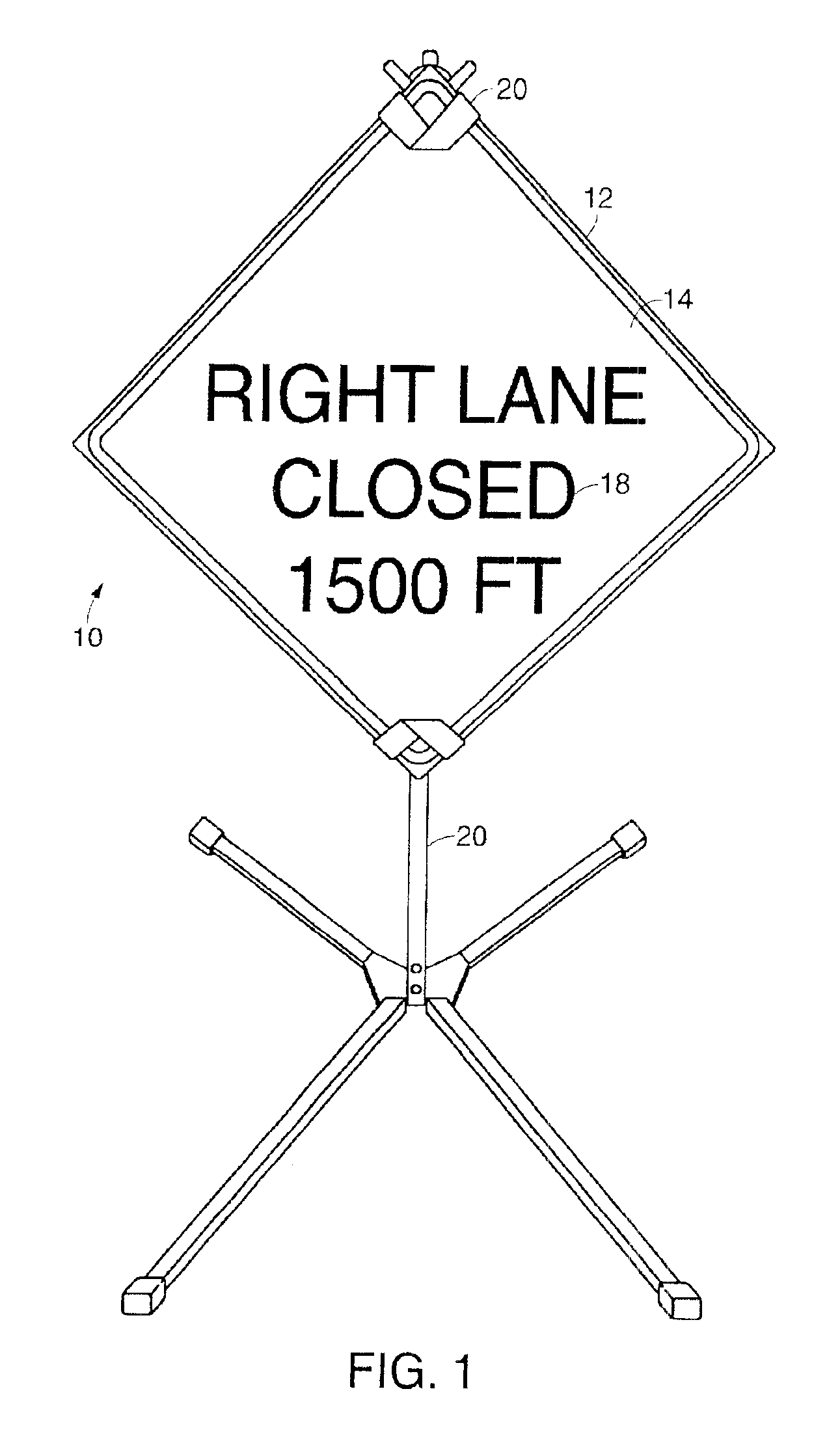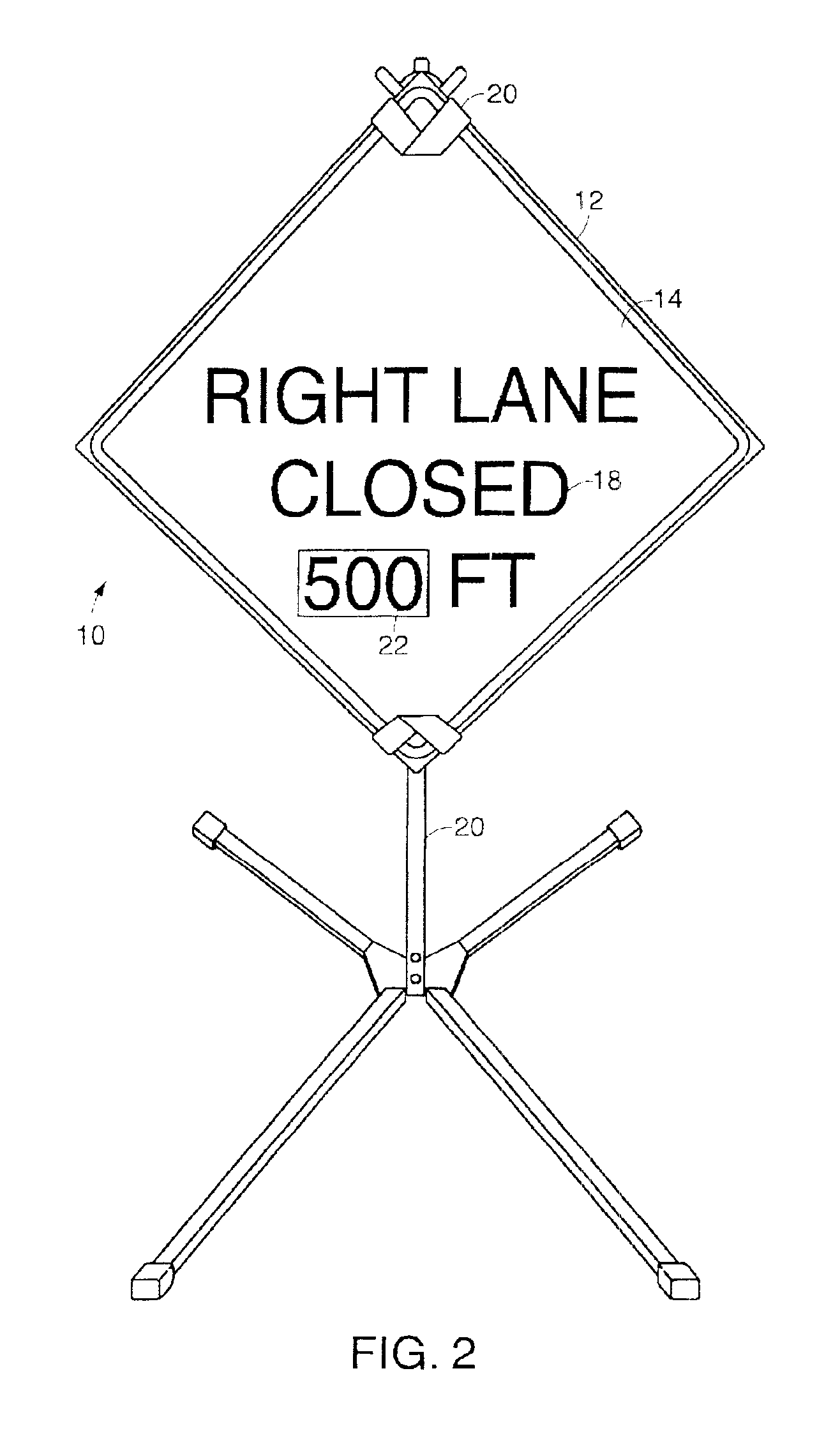Overlay management system
a management system and overlay technology, applied in the field of overlay management system, can solve the problems of destroying the retroreflective film on the face of the sign behind, difficult to remove the overlay, so as to facilitate the removal of the overlay, maintain the gripping force, and facilitate the removal of the inactive sign.
- Summary
- Abstract
- Description
- Claims
- Application Information
AI Technical Summary
Benefits of technology
Problems solved by technology
Method used
Image
Examples
Embodiment Construction
[0021]A description of preferred embodiments of the invention follows. FIG. 1 illustrates a sign 10 which includes a main body 12 that can have retroreflective sheeting 14 on a first or front surface 16 (shown in cross-sectional view in FIG. 3). The sign 10 includes lettering, images, or other indicia 18 used to convey a message, for example, to a passing motorist. In one embodiment, the sign 10 is mounted in place by a mounting device 20. FIG. 2 illustrates the sign 10 having an overlay 22 positioned over at least a portion of the main body 12 for changing all or some of the indicia 18.
[0022]FIG. 3 is a cross-sectional view of the sign 10. In one embodiment, the main body 12 and overlay 22 are made from a tough, durable thermoplastic which is also substantially resistant to degradation to outdoor ultraviolet exposure. In this embodiment, the components 12, 22 are formed from polycarbonate. Having all of the main components made of the same material reduces the impact of temperature...
PUM
 Login to View More
Login to View More Abstract
Description
Claims
Application Information
 Login to View More
Login to View More - R&D
- Intellectual Property
- Life Sciences
- Materials
- Tech Scout
- Unparalleled Data Quality
- Higher Quality Content
- 60% Fewer Hallucinations
Browse by: Latest US Patents, China's latest patents, Technical Efficacy Thesaurus, Application Domain, Technology Topic, Popular Technical Reports.
© 2025 PatSnap. All rights reserved.Legal|Privacy policy|Modern Slavery Act Transparency Statement|Sitemap|About US| Contact US: help@patsnap.com



